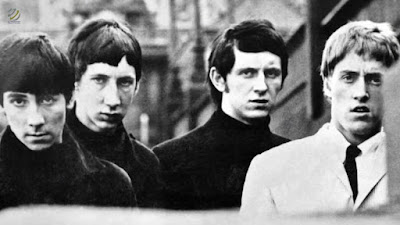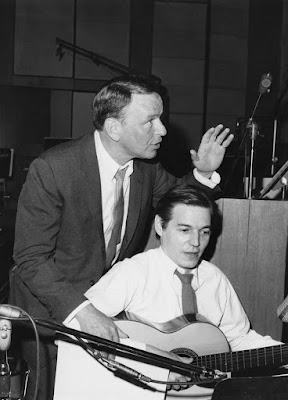Escrita por
Paul McCartney mas creditada à dupla Lennon/McCartney, foi gravada
entre 2 de outubro e 2 de novembro de 1967 e lançada em 24 de
novembro de 1967 no compacto que tinha I am the walrus como Lado B.
Um ajudante
dos Beatles chamado Alistair Taylor conversava com Paul sobre
composição e Paul pensou em dualidade. Paul sentou num harmonium e
pediu pra Taylor dizer o oposto de tudo que ele dissesse. Lennon não
gostou muito da música e queria I am the walrus como Lado A, mas
Paul e George Martin venceram a disputa.
Foi
regravada por The Cure, Paul McCartney, entre outros.
Paul cantou,
fez backing vocals, tocou piano, baixo, bongôs e conga. John fez
backing vocal, tocou guitarra solo e órgão Hammond. George Harrison
tocou guitarra solo e fez backing vocals. Ringo tocou bateria,
maracas, pandeiro e backing vocal.
Foi número
1 nos Estados Unidos, Reino Unido, Austrália, Canadá, Holanda,
França, Noruega, e Alemanha Ocidental. Foi número 2 na Áustria,
Bélgica, Irlanda e Suíça.
A letra:
You say yes, I
say no
You say stop and I say go go go, oh no
You say goodbye and I say hello
Hello hello
I don't know why you say goodbye, I say hello
Hello hello
I don't know why you say goodbye, I say hello
I say high, you say low
You say why and I say I don't know, oh no
You say goodbye and I say hello
(Hello goodbye hello goodbye) Hello hello
(Hello goodbye) I don't know why you say goodbye, I say hello
(Hello goodbye hello goodbye) Hello hello
(Hello goodbye) I don't know why you say goodbye
(Hello goodbye) I say hello/goodbye
Why why why why why why do you say goodbye goodbye, oh no?
You say goodbye and I say hello
Hello hello
I don't know why you say goodbye, I say hello
Hello hello
I don't know why you say goodbye, I say hello
You say yes (I say yes) I say no (But I may mean no)
You say stop (I can stay) and I say go go go (Till it's time to go), oh
Oh no
You say goodbye and I say hello
Hello hello
I don't know why you say goodbye, I say hello
Hello hello
I don't know why you say goodbye, I say hello
Hello hello
I don't know why you say goodbye, I say hello hello
Hela heba helloa
Hela heba helloa, cha cha cha
Hela heba helloa, wooo
Hela heba helloa, hela
Hela heba helloa, cha cha cha
Hela heba helloa, wooo
Hela heba helloa, cha cah cah [fade out]
You say stop and I say go go go, oh no
You say goodbye and I say hello
Hello hello
I don't know why you say goodbye, I say hello
Hello hello
I don't know why you say goodbye, I say hello
I say high, you say low
You say why and I say I don't know, oh no
You say goodbye and I say hello
(Hello goodbye hello goodbye) Hello hello
(Hello goodbye) I don't know why you say goodbye, I say hello
(Hello goodbye hello goodbye) Hello hello
(Hello goodbye) I don't know why you say goodbye
(Hello goodbye) I say hello/goodbye
Why why why why why why do you say goodbye goodbye, oh no?
You say goodbye and I say hello
Hello hello
I don't know why you say goodbye, I say hello
Hello hello
I don't know why you say goodbye, I say hello
You say yes (I say yes) I say no (But I may mean no)
You say stop (I can stay) and I say go go go (Till it's time to go), oh
Oh no
You say goodbye and I say hello
Hello hello
I don't know why you say goodbye, I say hello
Hello hello
I don't know why you say goodbye, I say hello
Hello hello
I don't know why you say goodbye, I say hello hello
Hela heba helloa
Hela heba helloa, cha cha cha
Hela heba helloa, wooo
Hela heba helloa, hela
Hela heba helloa, cha cha cha
Hela heba helloa, wooo
Hela heba helloa, cha cah cah [fade out]
A versão
dos Beatles:
A versão de
The Cure com James McCartmey, filho de Paul:
A versão de
Paul McCartney ao vivo no Rio de Janeiro:


















